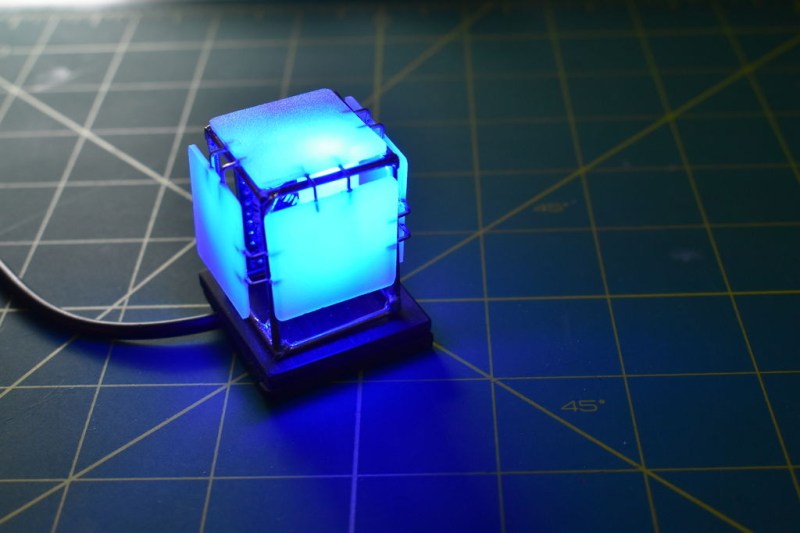If you’re planning to get into circuit sculpture one of these days, it would probably be best to start with something small and simple, instead of trying to make a crazy light-up spaceship or something with a lot of curves on the first go. A small form factor doesn’t necessarily mean it can’t also be useful. Why not start by making a small automatic night light?
 The circuit itself is quite simple, especially because it uses an Arduino. You could accomplish the same thing with a 555, but that’s going to complicate the circuit sculpture part of things a bit. As long as the ambient light level coming in from the light-dependent resistor is low enough, then the two LEDs will be lit.
The circuit itself is quite simple, especially because it uses an Arduino. You could accomplish the same thing with a 555, but that’s going to complicate the circuit sculpture part of things a bit. As long as the ambient light level coming in from the light-dependent resistor is low enough, then the two LEDs will be lit.
We love the frosted acrylic panels that [akshar1101] connected together with what looks like right angle header pins. If you wanted to expose the electronics, localize the light diffusion with a little acrylic cover that slips over the LEDs. Check it out in the demo after the break.
There’s more than one way to build a glowing cuboid night light. The Rubik’s way, for instance.















Makes me wonder, is it possible with just one transistor???
Short answer: Yes! :)
Just search for “LDR circuit” in your favourite search engine, and you will get plenty of simple circuits that do just what this thing here does, with only one bipolar transistor…
I’m pretty sure something similar would be possible without any active devices at all, just by shunting the LED with the photoresistor. Of course the ambient illumination threshold would be fixed, but if we’re going for minimalism…
555? You could do the same thing with one transistor.
Did he just connect two 20mA LEDs in parallel to a single digital output of the arduino? I always think this is sketchy, even if they say it can drive up to 40mA on a digital IO.
And you would not even need a 555 to make that circuit. A simple OP-Amp or comparator IC, or even a discretely built one with a few bipolar transistors would be enough to figure out if it’s dark or not and turn on the light. The only neat thing is that the light of the LED does not trigger the LDR into thinking it’s day again…
I agree, it’s a bit overkill, but I would do the same. My knowledge of electronics isn’t that advanced that I could think of what you just described.
I definitely want to learn to make my own electronics and not just throw an ESP8266, ESP32 or an Arduino in the game. But were to start ….
A lot of information is available but to me it looks like a forest.
Get a book that aims at teaching electronics, so you have some sort of guideline/course to follow along. The internet if a nice place to research that one specific tree you are looking for, but it’s not that great at taking you by the hand and lead you thru the forest step by step.
If you’re going to use a micro, simply place another LED across a pair of logic pins, and use the reverse-bias timing trick to measure the ambient light level. No need for a CDS cell voltage divider. A clear red or amber LED works best.